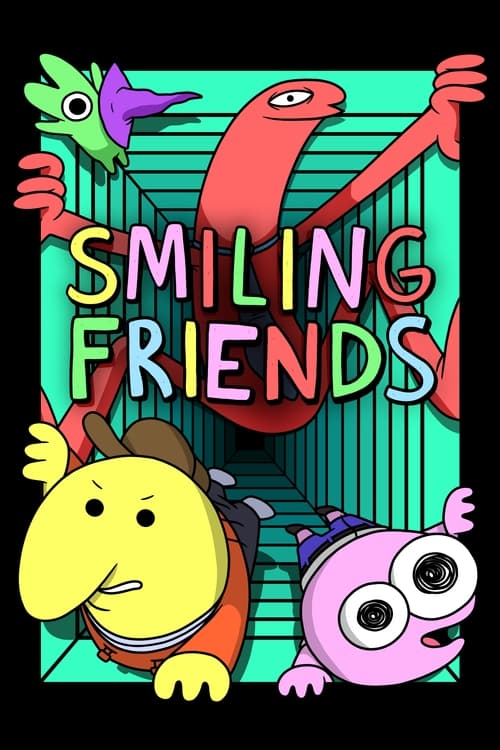
Ask Your Own Question
What is the plot?
The episode begins with a flashback to the past, where Jiraiya is seen training Naruto. Jiraiya expresses his hopes for Naruto to become a great ninja, emphasizing the importance of believing in oneself. This moment sets the tone for the emotional weight of the episode, as it foreshadows the challenges Naruto will face.
In the present, Naruto and his team, consisting of Sakura and Sai, are on a mission to find and confront the Akatsuki. They are currently in pursuit of the Akatsuki member, Hidan, who has been wreaking havoc. The team is determined to stop him, driven by the desire to protect their village and avenge those who have suffered at the hands of the Akatsuki.
As they track Hidan, they come across a village that has been attacked. The destruction is evident, with buildings in ruins and villagers in despair. Naruto feels a surge of anger and determination to confront Hidan, vowing to bring justice to those affected. The emotional stakes are high as Naruto reflects on the pain of loss and the responsibility he carries as a ninja.
The scene shifts to Hidan, who is shown performing a ritualistic ceremony, revealing his immortality and sadistic nature. He is seen taunting his victims, showcasing his twisted philosophy on life and death. This moment highlights the danger he poses, not just physically but psychologically, as he revels in the suffering he causes.
Naruto and his team finally locate Hidan and engage him in battle. The fight begins with Naruto charging at Hidan, using his Shadow Clone Jutsu to create multiple copies of himself. Hidan, however, demonstrates his immortality by easily withstanding Naruto's attacks. The clones are dispatched, and Hidan's mocking demeanor only fuels Naruto's anger.
As the battle progresses, Shikamaru Nara arrives on the scene, having devised a plan to counter Hidan's abilities. He explains Hidan's immortality and his ritualistic method of killing, which involves drawing blood and using a cursed technique. Shikamaru's strategic mind comes into play as he sets a trap for Hidan, using his Shadow Possession Jutsu to immobilize him.
The plan unfolds as Shikamaru successfully captures Hidan in his shadow, allowing Naruto and the others to attack. However, Hidan manages to break free, showcasing his resilience. The fight becomes increasingly intense, with Hidan taunting Shikamaru about his friends and their fates, pushing Shikamaru to the brink of rage.
In a pivotal moment, Shikamaru sacrifices his own blood to Hidan's ritual, allowing Hidan to stab himself. This act is a calculated risk, as Shikamaru knows that Hidan's immortality will backfire on him. The scene is filled with tension as Hidan realizes he has been outsmarted, and the consequences of his actions begin to unfold.
As Hidan suffers from his own ritual, Shikamaru takes advantage of the situation, using his shadow to bind Hidan once more. The emotional weight of the battle is palpable, as Shikamaru reflects on the loss of his mentor, Asuma, and channels that pain into his determination to defeat Hidan.
The episode culminates in a dramatic showdown, with Shikamaru finally managing to decapitate Hidan, effectively ending the threat he poses. The victory is bittersweet, as the team mourns the loss of Asuma and the toll the battle has taken on them. Naruto, filled with a mix of relief and sorrow, vows to continue fighting for his friends and the village.
The episode concludes with a somber tone, as the team reflects on their journey and the sacrifices made along the way. Naruto's resolve to protect those he loves is stronger than ever, setting the stage for the challenges that lie ahead.
What is the ending?
In the ending of Naruto Shippūden, Season 6, titled "Master's Prophecy and Vengeance," the story culminates in a confrontation between Naruto Uzumaki and the Akatsuki member, Pain. After a fierce battle, Naruto ultimately defeats Pain, showcasing his growth and determination. Pain, who has been driven by his own tragic past and desire for peace, is moved by Naruto's resolve and the belief in the possibility of understanding and redemption. The episode concludes with Naruto's victory leading to a shift in Pain's perspective, ultimately resulting in a moment of reconciliation and hope for the future.
As the episode unfolds, we find ourselves in the midst of a chaotic battle in the Hidden Leaf Village. The sky is darkened by the aftermath of Pain's devastating assault, and the village lies in ruins. Naruto, having just arrived on the scene, is filled with a mix of anger and determination. His heart races as he witnesses the destruction wrought by Pain, who has been a relentless force of destruction, embodying the pain and suffering that has plagued the world.
Scene breaks to Naruto standing amidst the rubble, his fists clenched tightly. He recalls the faces of his friends and mentors, the memories of their teachings fueling his resolve. The emotional weight of his past, the loss of loved ones, and the desire to protect his village surge within him. He knows he must confront Pain, not just for revenge, but to uphold the ideals of peace and understanding that he cherishes.
The battle begins in earnest as Naruto faces off against Pain, who is revealed to be a composite of six bodies, each with unique abilities. The fight is intense, with Naruto utilizing his newfound Sage Mode, which enhances his physical abilities and sensory perception. The scene is filled with dynamic action, as Naruto dodges attacks and counters with powerful Rasengan techniques. The animation captures the fluidity of the combat, the energy crackling in the air as the two powerful forces clash.
As the fight progresses, Pain reveals his tragic backstory, sharing the pain of loss that has driven him to seek a twisted form of peace through destruction. Naruto listens intently, his expression shifting from anger to empathy. He understands Pain's motivations, recognizing the cycle of hatred that has perpetuated suffering in the world. This moment of connection is pivotal, as it highlights Naruto's growth; he is no longer just a boy seeking recognition but a young man who understands the complexities of human emotions.
The climax of the battle arrives when Naruto, fueled by his belief in the possibility of change, unleashes a powerful attack that overwhelms Pain. The scene is visually striking, with vibrant colors and dramatic music underscoring the intensity of the moment. Pain is ultimately defeated, but instead of delivering a final blow, Naruto chooses to spare him, embodying the very ideals of compassion and understanding he wishes to promote.
In the aftermath, Pain, now stripped of his power, reflects on his actions and the futility of his quest for peace through violence. He acknowledges Naruto's strength and the hope he represents for the future. This moment of vulnerability is crucial, as it signifies a turning point for Pain, who begins to understand that true peace cannot be achieved through fear and destruction.
As the episode draws to a close, Naruto stands amidst the ruins of the village, surrounded by his friends and allies who have witnessed his growth. The villagers, once fearful and resentful, now look at him with admiration and hope. Naruto's victory is not just over Pain, but over the cycle of hatred that has plagued their world. The final scenes depict a sense of renewal, as the village begins to rebuild, symbolizing the possibility of a brighter future.
In summary, the fates of the main characters are as follows: Naruto emerges as a hero, having proven his strength and ideals; Pain, having been defeated, finds a moment of clarity and redemption; and the villagers, inspired by Naruto's actions, begin to heal from the trauma of the attack. The episode concludes with a sense of hope, emphasizing the themes of understanding, compassion, and the potential for change in a world filled with pain.
Is there a post-credit scene?
In "Naruto Shippūden" Season 6, titled "Master's Prophecy and Vengeance," there is no post-credit scene following the episodes. The episodes conclude without any additional scenes or content after the credits roll. The focus remains on the main storyline and character developments throughout the episodes, particularly revolving around the themes of vengeance, prophecy, and the emotional struggles of the characters involved.
What is the significance of the prophecy mentioned in this season?
The prophecy in 'Master's Prophecy and Vengeance' revolves around the fate of the ninja world and the potential for a chosen one to bring about peace or destruction. It is tied to the character of Naruto and his journey, as well as the legacy of the Sage of the Six Paths. The prophecy serves as a driving force for many characters, influencing their actions and decisions throughout the season.
How does Sasuke's quest for vengeance affect his relationships with other characters?
Sasuke's quest for vengeance is a central theme in this season, particularly in his interactions with Naruto and Sakura. His obsession with avenging his clan leads him to distance himself from his friends, creating a rift that deepens as he becomes more consumed by his desire for power. This emotional turmoil is evident in his confrontations with Naruto, where their differing ideologies about revenge and friendship clash.
What role does Orochimaru play in this season's events?
Orochimaru's role in 'Master's Prophecy and Vengeance' is pivotal as he manipulates events from the shadows. He seeks to regain his strength and influence, which leads to significant confrontations with Sasuke. His past connections with Sasuke and the implications of his experiments on the Uchiha clan add layers of complexity to the narrative, showcasing the ongoing struggle between the desire for power and the consequences that come with it.
How does Naruto's training with Kakashi influence his abilities?
During this season, Naruto undergoes intense training with Kakashi, which significantly enhances his abilities. Kakashi teaches Naruto to harness the power of the Nine-Tails and improve his chakra control. This training not only boosts Naruto's combat skills but also deepens his understanding of teamwork and strategy, preparing him for the challenges he will face against formidable foes.
What emotional struggles does Sakura face in this season?
Sakura grapples with feelings of inadequacy and helplessness throughout 'Master's Prophecy and Vengeance.' As she witnesses Sasuke's descent into darkness and Naruto's growth, she struggles with her own identity as a kunoichi. Her desire to support her friends while feeling overshadowed by their abilities creates a poignant internal conflict, leading her to seek ways to prove her worth and contribute meaningfully to their missions.
Is this family friendly?
Naruto Shippūden, season 6, titled "Master's Prophecy and Vengeance," contains several themes and scenes that may be considered objectionable or upsetting for children or sensitive viewers. Here are some aspects to be aware of:
-
Violence and Combat: The series features intense battles with characters using various jutsu (ninja techniques) that can result in injuries or death. The action sequences can be graphic, showcasing physical confrontations and the consequences of battles.
-
Death and Loss: Characters experience significant loss, including the death of loved ones. These moments are portrayed with emotional weight, which may be distressing for younger viewers.
-
Emotional Turmoil: Characters grapple with feelings of betrayal, revenge, and deep sorrow. The exploration of these emotions can be heavy and may resonate strongly with sensitive audiences.
-
Dark Themes: The storyline delves into themes of vengeance, manipulation, and the consequences of hatred. These darker elements may not be suitable for all children.
-
Mature Relationships: There are hints of complex relationships and emotional struggles that may be difficult for younger viewers to fully understand.
Overall, while Naruto Shippūden is an action-adventure series, it does contain elements that could be upsetting for children or those who are sensitive to themes of violence, loss, and emotional conflict. Viewer discretion is advised.











